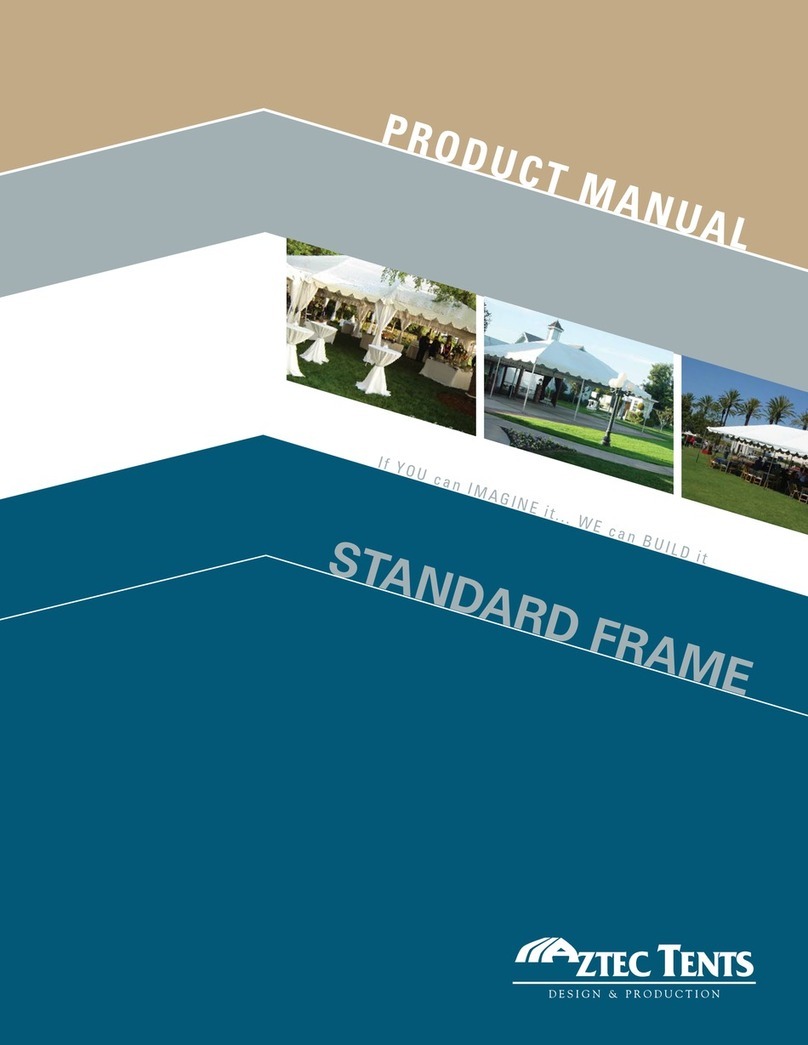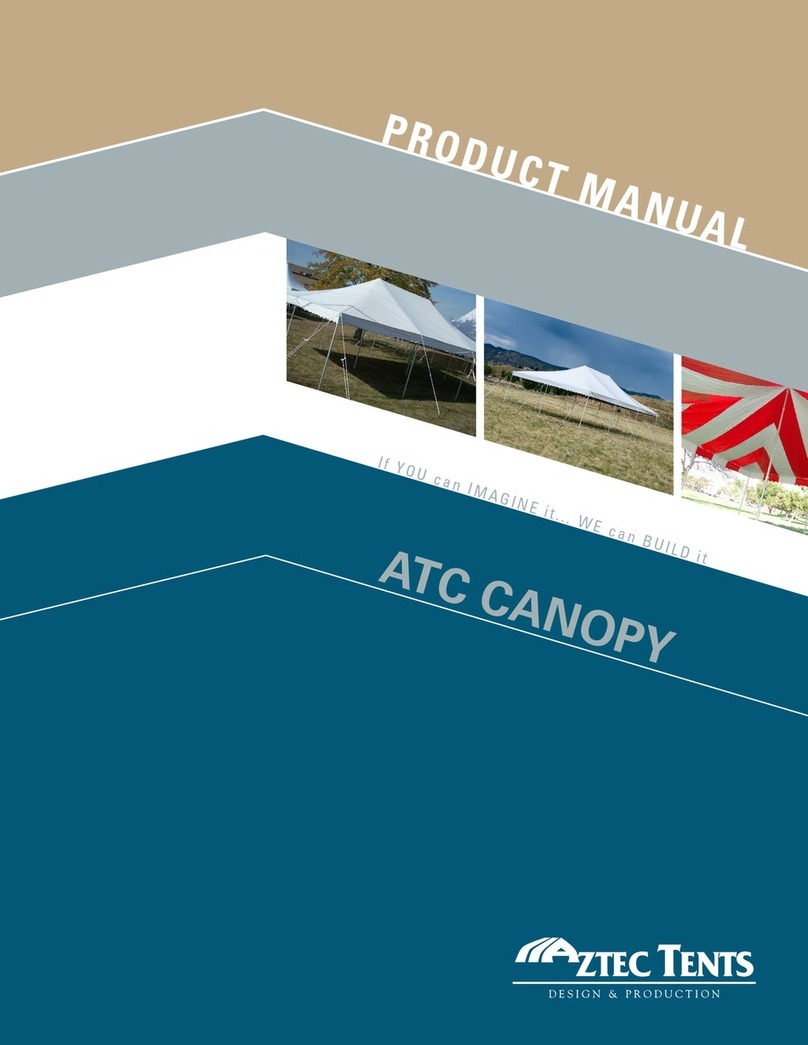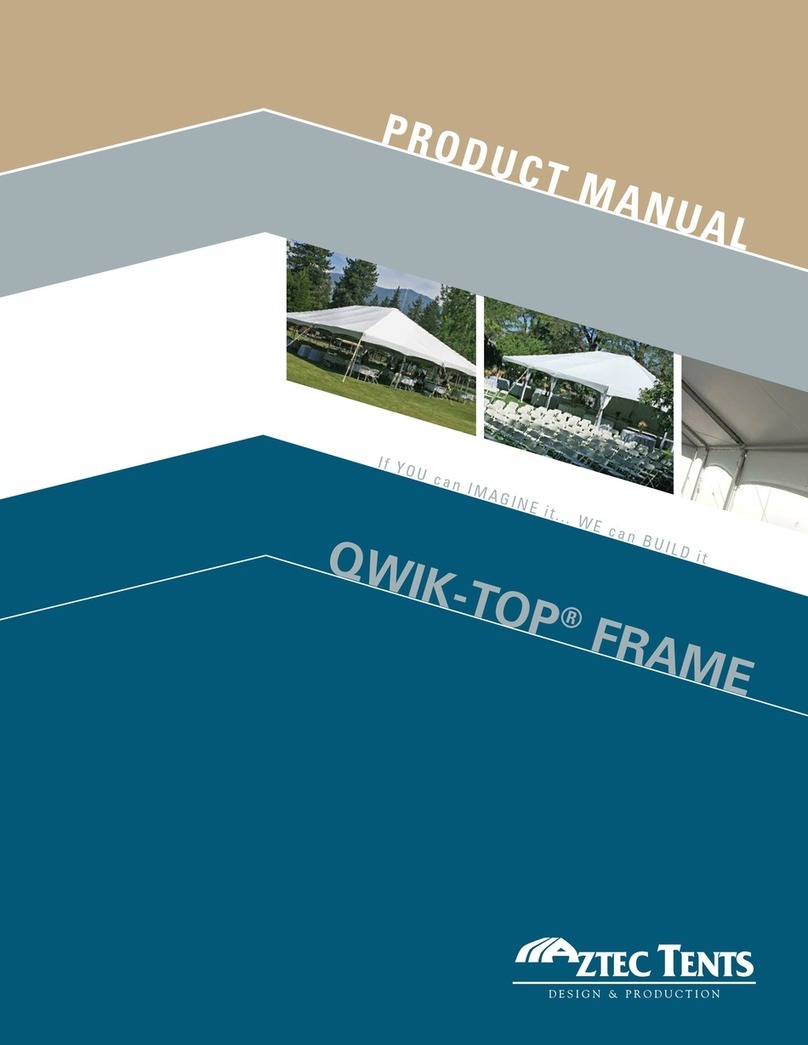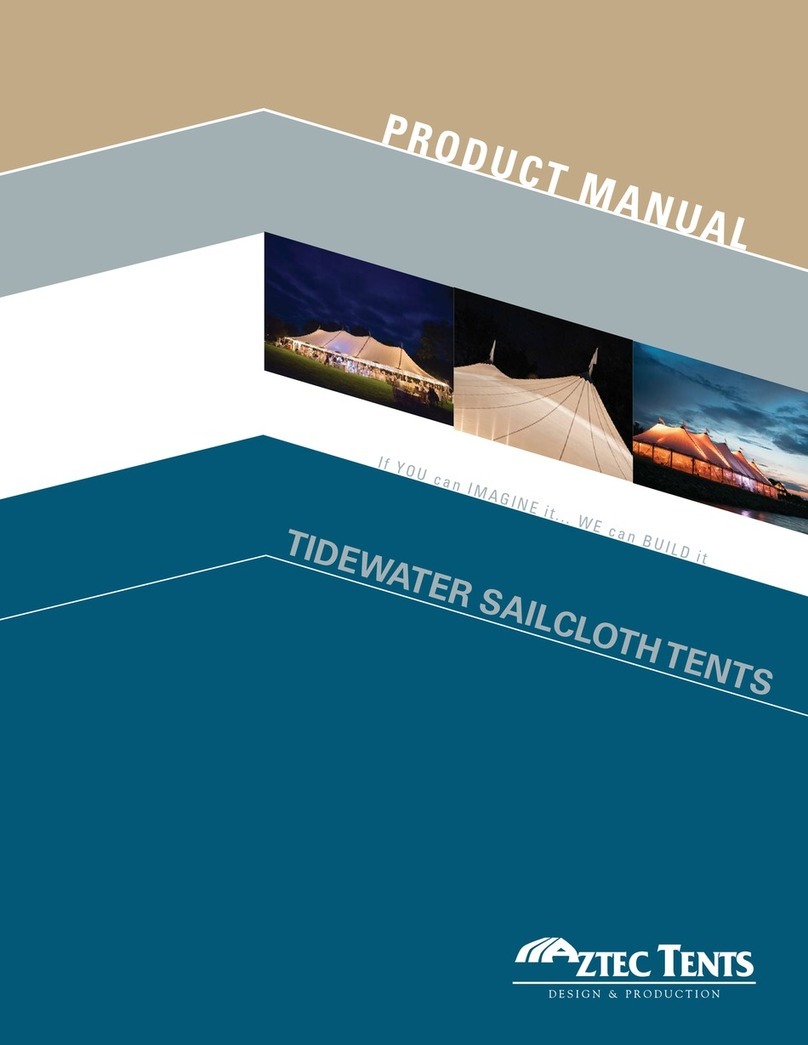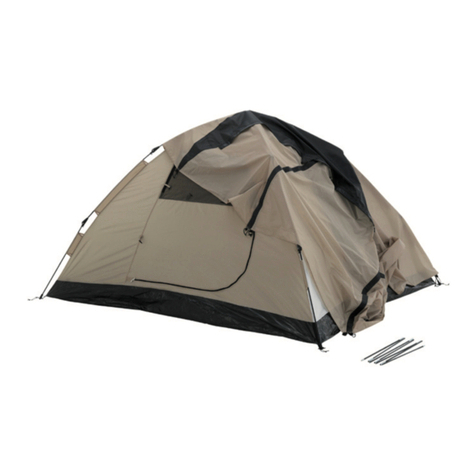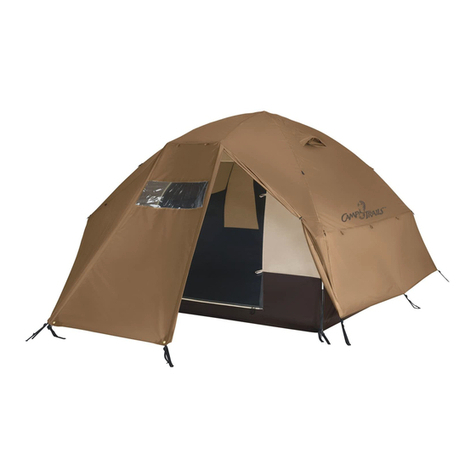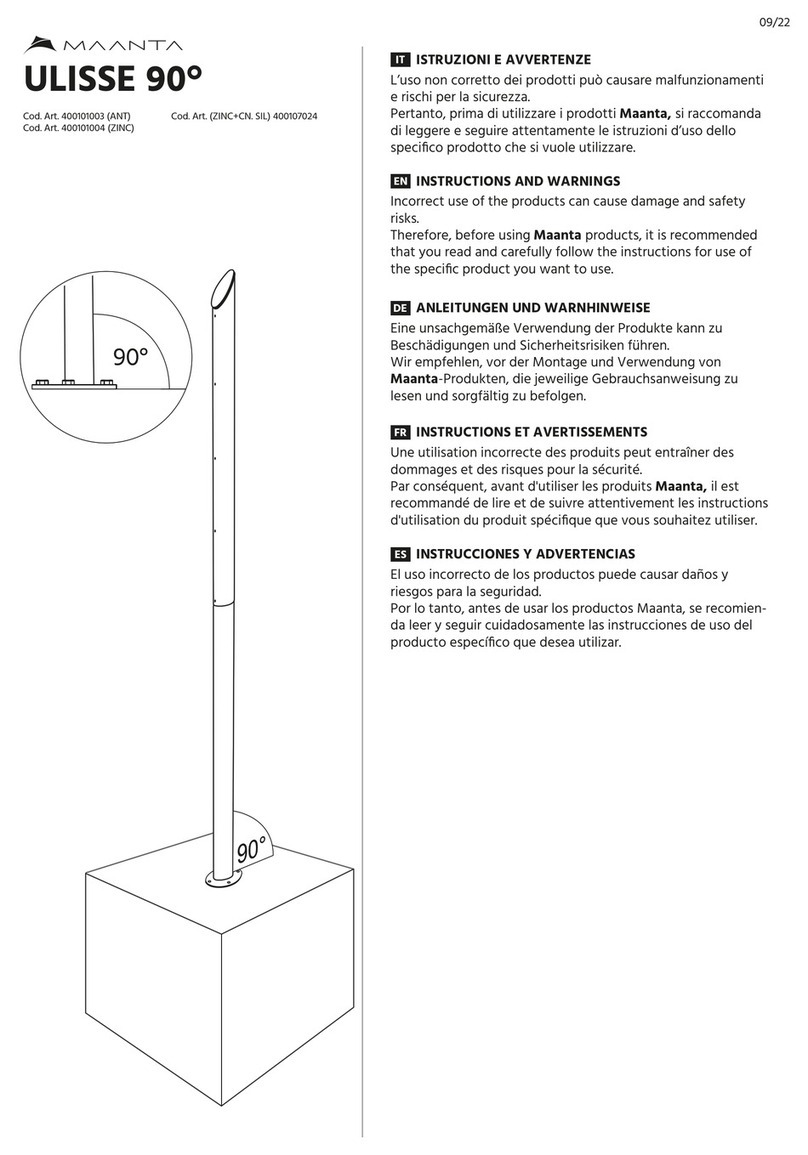www.aztectents.com
Fabric Care & Warnings
The sailcloth fabric developed for the Tidewater system requires specific attention during installation, cleaning, and stor-
age to maintain its maximum life span. Unlike conventional tent fabrics, the sailcloth used in the Tidewater system is
significantly lighter in weight and significantly more translucent than other tent fabrics. Please follow the following care
and maintenance guidelines provided for this product.
GROUND CLOTHS:The usage of ground covering material under the tent during installation and dismantle will protect
the tent fabric from soiling and from minor surface abrasions. A ground cloth can also help keep the tent top dry if the
ground surface ( i.e. dirt, grass, etc.) is wet during the installation or dismantle.
MILDEW TREATMENT: The Tidewater sailcloth fabric is pretreated with mildew inhibitors that help prevent the growth
and spreading of mildew and fungus. Although treated, proper care should be given to prevent potential growth. If you
see mildew wipe it away immediately with a clean towel and diluted soap solution. Never fold your fabric for storage if
the fabric is even slightly wet. Mold/Mildew spores in the air and on the ground will come in contact with the fabric
while installed. To grow, all the mildew needs is moisture and some source of food (often found in dirt that might be on
the tent). Your best bet is to keep your fabric clean and dry to prevent mildew growth.
FABRIC CLEANING: The best way to clean theTidewater Sailcloth Fabric is with a soft towel immersed in a diluted solu-
tion of warm water and our tent cleaning solution. A diluted and mixed solution of a tablespoon of traditional dish soap
with a gallon of warm water will also work well.The process of hand cleaning the fabric will allow you to apply only
enough diluted solution to get the fabric clean. This will help limit the amount of water placed on the fabric to expedite
drying time. Full immersion of the fabric in water is not recommended.The use of commercial front loading or top load-
ing washing machines is not recommended and will void the warranty of the fabric. These machines cause an excessive
amount of stress to the fabric and can force water into the fabric causing increased occurrences of mildew growth and
shorten the life of the fabric. As with any cleaning, the fabric should be hung to dry completely before folding and stor-
age. Cleaners that include chlorine, bleach, and/or any petroleum based solvents will degrade the fabric, discolor the
fabric and shorten its life span.
FABRIC DRYING: The best way to dry theTidewater Sailcloth Fabric is to hang-dry in a low humidity environment.
Circulating air around the surface of the hanging fabric with the use of fans will also speed the drying process and
improve drying time in more humid environments. The use of commercial drying equipment and any drying using heat
will void the warranty of the fabric. DO NOT STORE YOUR FABRIC WET. Fabric folded and stored wet will mildew.
TENSIONING: The ratchet tensioning system provided with the Tidewater tent system is the recommended method to
pull the fabric tight. This tensioning will allow you to properly pull the tent to its intended dimension while minimizing
any potential for installers to inadvertently over-tension the fabric.
SQUARING:The proper tensioning of theTidewater system is highly dependent on accurate and proper placement of the
anchoring system in relation to the tent. It is critical to accurately mark each anchor location, each leg base position, and
each centerpole base location in order to avoid over stressing the fabric, poles, and anchoring system.
ANCHORING: The safe installation and use of commercial tenting products can vary from site to site and during varying
climactic conditions. Careful consideration should be paid to any installation during windy conditions and shall be moni-
tored throughout the duration of the installation. Periodic maintenance and monitoring of the installation by the installer
is required. Techniques other than those specified in this document may be required during these types of conditions.
Soil conditions also vary from site to site.The included anchoring package for this tent may need to be supplemented
with alternate anchoring during windy conditions and in areas with questionable soil holding power.
STORAGE RECOMMENDATIONS: The fabric for the Tidewater system shall be stored DRY in a cool, dry place in the pro-
tective vinyl storage bags included with your purchase. Other types of bags are acceptable as long as they can protect
the fabric from the environmental elements of the storage area. Poles, anchors, and anchoring tie-downs should also be
stored DRY in a cool, dry place to minimize exposure to the elements and to keep clean and in proper working condi-
tion.






